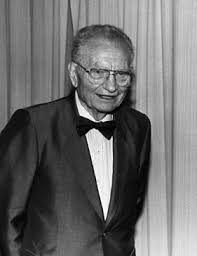Paul Anthony Samuelson (15 May 1915 - 13 December 2009) was an American economist and the first American to win the Nobel Memorial Prize in Economics Science. The Swedish Royal Academy said, in the 1970s, he "has done more than any contemporary economists to raise the level of scientific analysis of economic theory". Parker calls him "the father of Modern Economics", and the New York Times considers him "the best educationist economist of the twentieth century".
Samuelson was probably the 20th century's most influential economist. In 1996, when he was named America's top science-honored national medal of science, President Bill Clinton Samuelson was praised for more than 60 years for his "fundamental contribution to economic science". Samuelson considered mathematicians as the "natural language" for economists and contributed significantly to the mathematical basis of the economy with the foundation of the Economic Analysis Foundation. He was the author of the best-selling economics textbook of all time: Economics: An introductory analysis, first published in 1948. It was the second American textbook that tried to explain the principles of Keynesian economics, now it has sold 4 million copies in 40 languages in its 19th edition, including Russian, French, Greek, Slovak, Chinese, Portuguese, German, Spanish, Dutch, Turkish, Hebrew, Italian and Arabic James Patterbara, former head of the Department of Economics of MIT, mentioned in his book that Samuelson "has kept a great tradition like a researcher and a teacher, as one of the giants on the shoulders of every contemporary economist".
At the age of 16, he entered the University of Chicago at the depth of melodrama and earned Ph.D. in Harvard's Economics. After graduation, he became an assistant professor of Economics at the Massachusetts Institute of Technology (MIT) when he was 25 years old and at the age of 32 was a full professor. In 1966, he was honored with the highest faculty of MIT. He spent his career at MIT, where he was renowned economists Robert M. Solo, Franco Modigliani, Robert C. Morton, Joseph E. Stiglitz, and Paul Crüdenman, all of whom won the Nobel Prize. Samuelson is also an influential policy textbook, and economics, author (and co-author since 1985) first published in 1948, now in its 19th edition. The book has been translated into forty-one languages and four million copies have been sold; It is considered the best-selling economics textbook in history. [Quote Needed] Samuelson once said, "If I can write his texts, let's write the laws of the country." The great depression in the shade of the Great and World War II, it helped popularize John Mayard's insight into Keane's insight. A major focus was on how to avoid, or at least, in economic activity.
Samuelson wrote: "It is not difficult to claim that the great economic dictatorship [the Great Depression] is a comprehensive creation of dictatorships and a widespread creation of World War II in a small measure from the world's failure to meet." It expresses concern with the economic importance of the war and the importance of economic policy for peace development.
Samuelson's dominant textbooks have been criticized for comparative growth rates between the United States and the Soviet Union, which are not compatible with historic GNP differences. The 1977 edition extends the probability of Soviet / US real GNP parity between 1977 and 1995. Each subsequent version is not excluded from the 1985 version until the further date range is expanded.
In 1989, Samuelson commented on the economics of the Soviet Union and Marxism: "Many suspects previously believed that the Soviet economy proved that ... a socialist, command economy could work and even succeed." The 1989 revolution happened in the same year and it broke after two years of the Soviet Union.
Samuelson's book was the second one that tried to introduce a wider audience to the Kenyan economy but by far the most successful one. Canadian economist Lauri Tarsis, who was a student joining Harvard's speech at Harvard in 1930, included an introductory note speech in his early 1974 paper, which is known as The Elements of Economics. It was attacked by trustees, and donors to American colleges and universities as a "socialist heresy" promotion. William F. Buckley Jr. invades Horse Analysis as "Communist Inspired"
He served as the advisor to President John F. Kennedy and Lyndon B. Johnson and was the Council of the United States Treasury, Budget Bureau, and Economic Advisory Council. Samuelson wrote a weekly column for Newsweek magazine with Chicago School Economist Milton Friedman, where he represented opponents: Samuelson, as "self-cafeterias kitsian", claimed from the Keynesian perspective but he was able to accept what he felt. It's about Conversely, Friedman represents the Mentor's point of view. Samuelson died on December 13, 2009, at the age of 94.









0 coment rios: